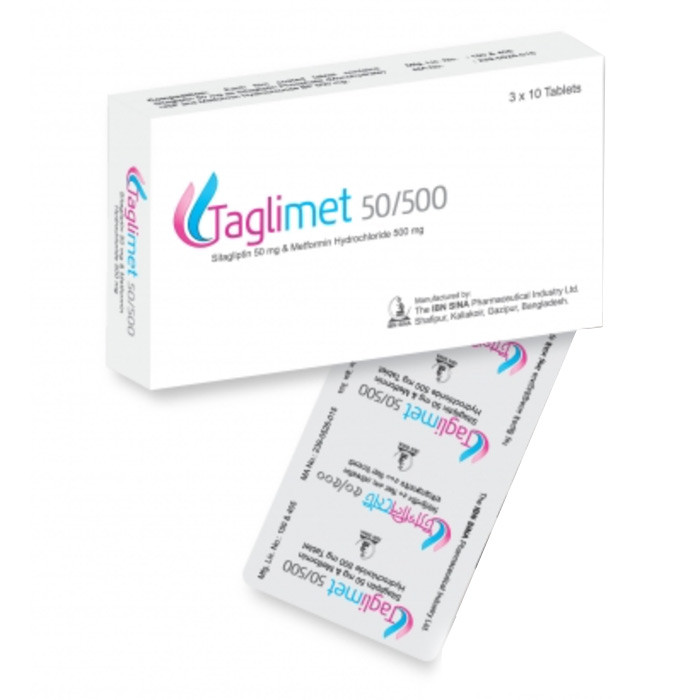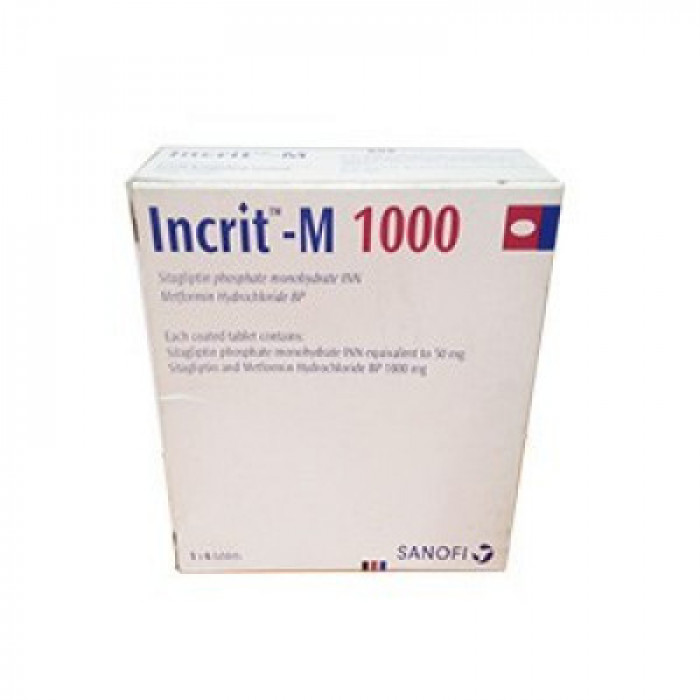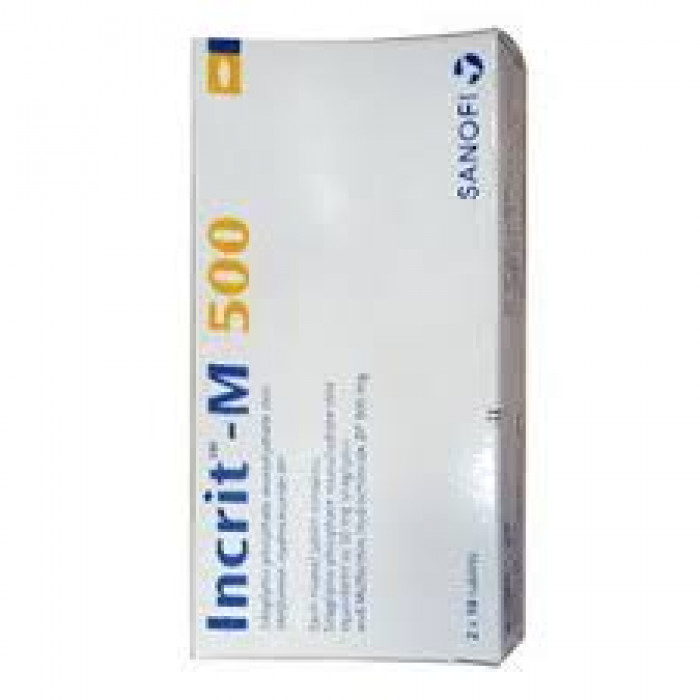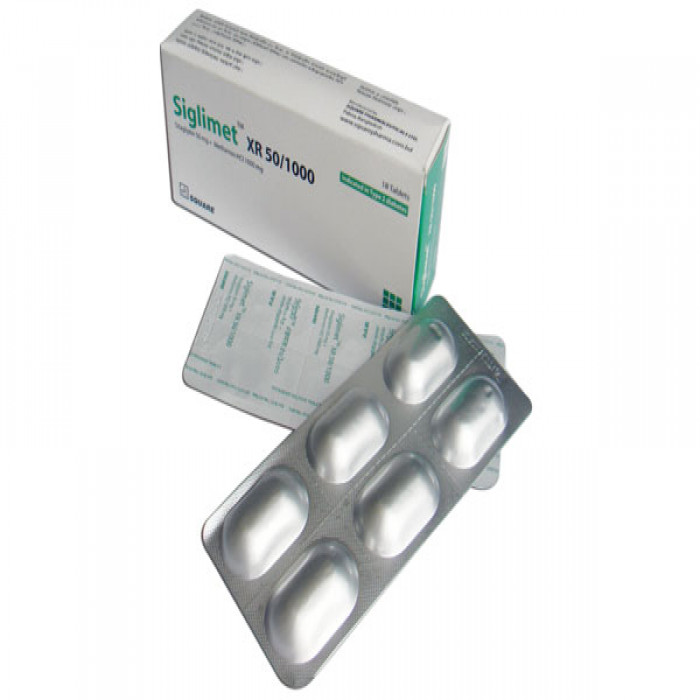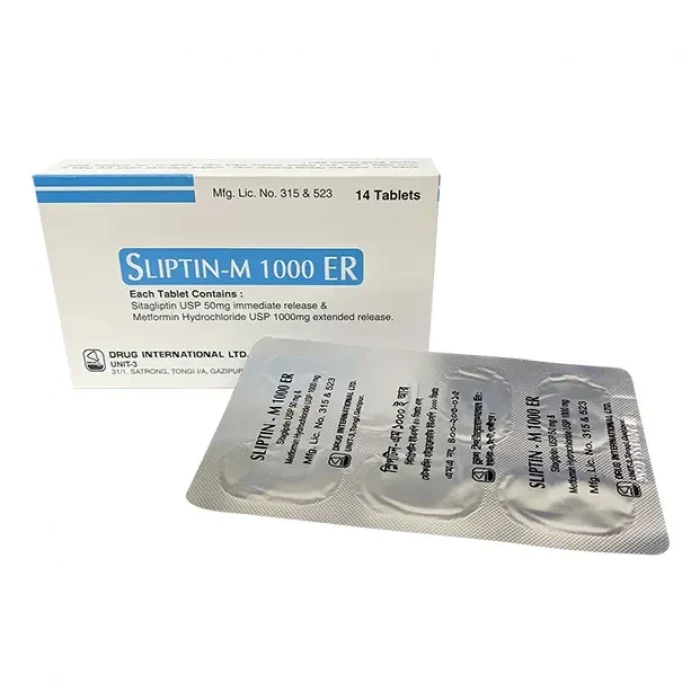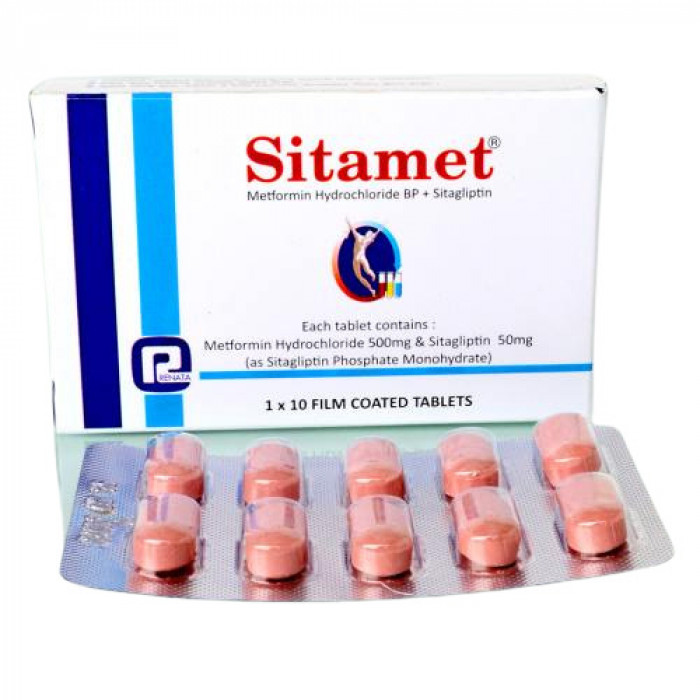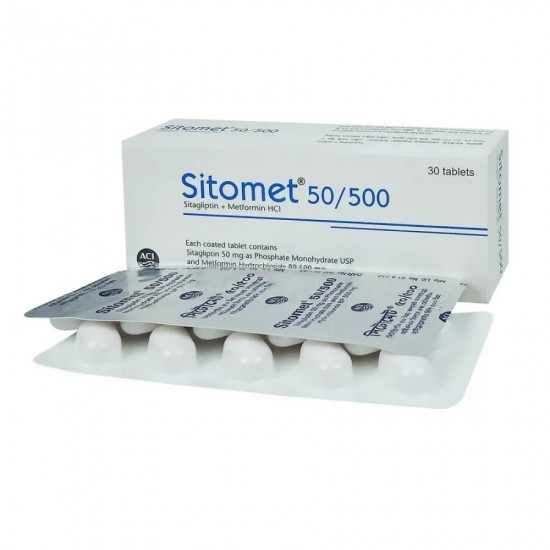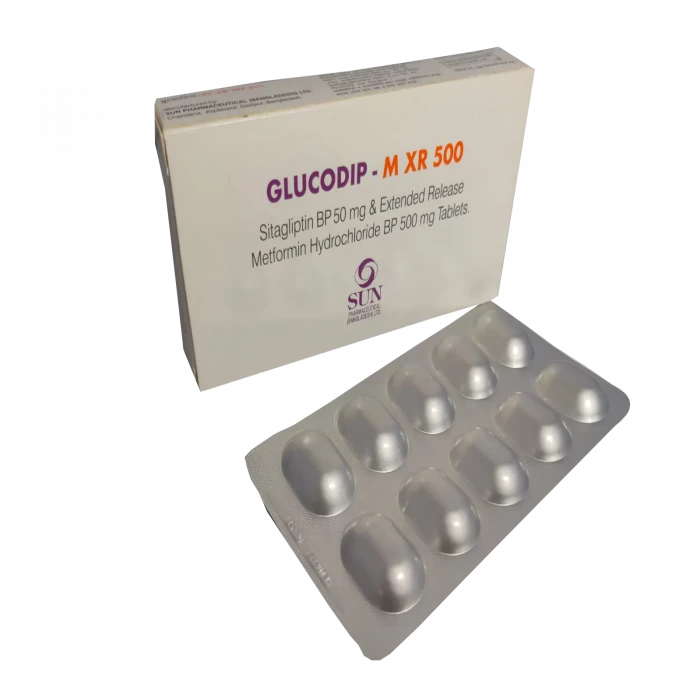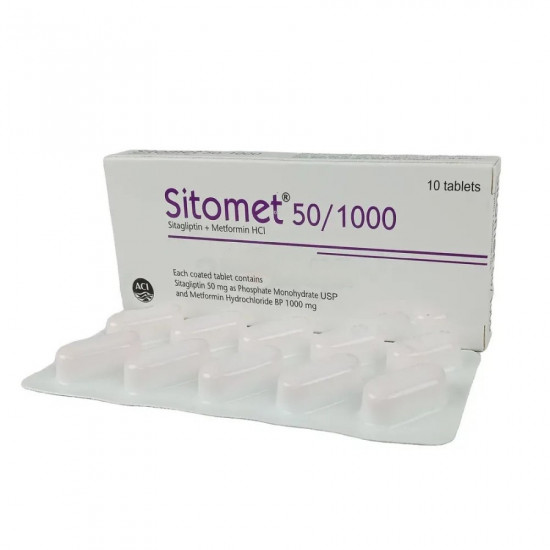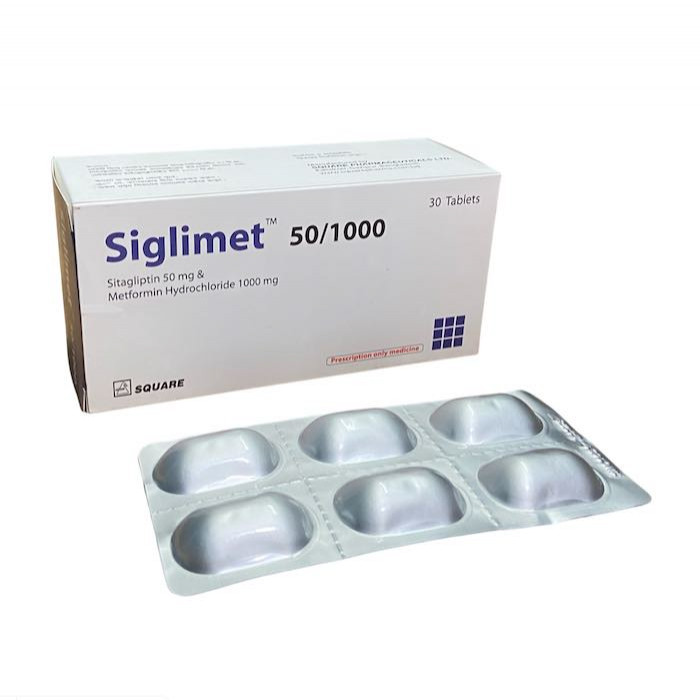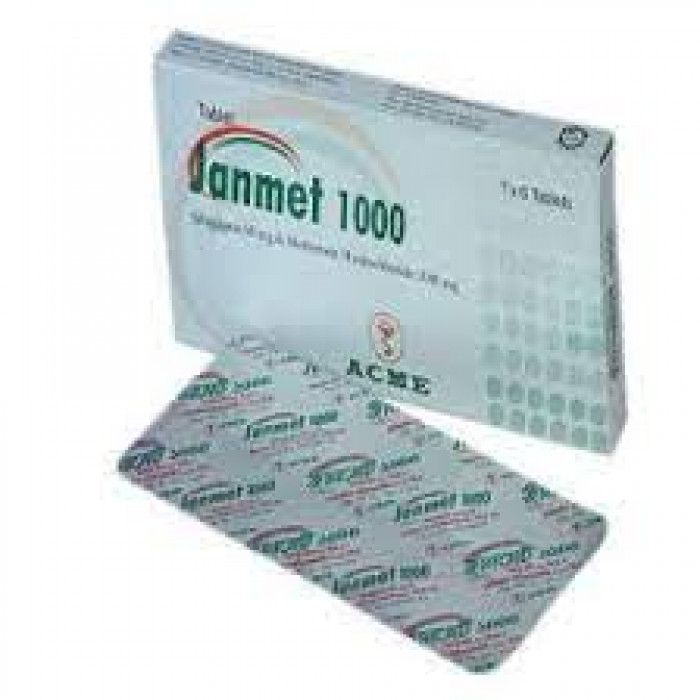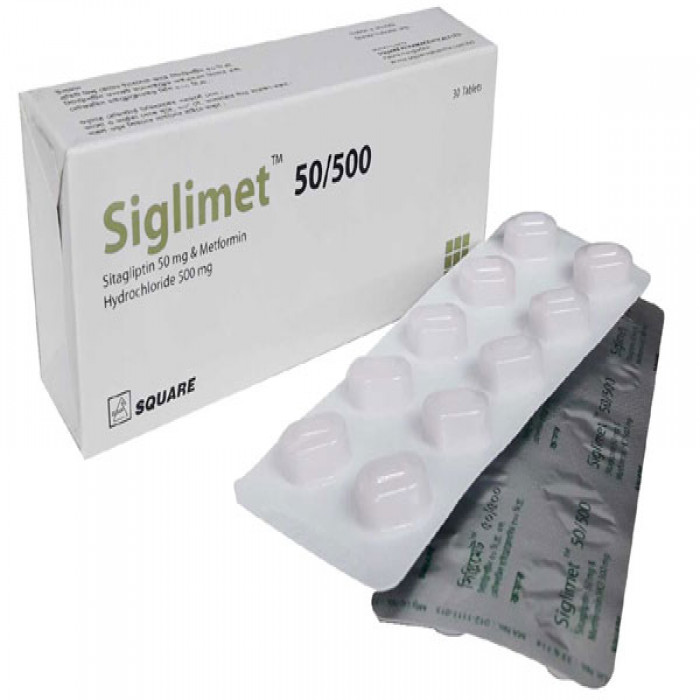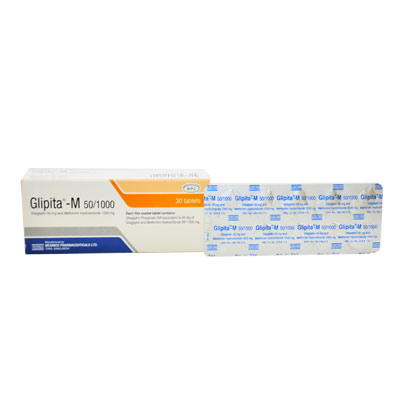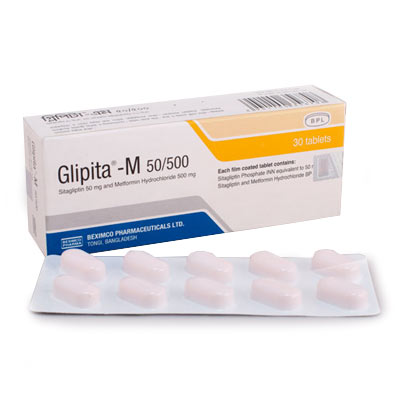
✔ 100% Authentic Product
👁️ Currently Viewing 3406
Glipita M 500 (500mg+50mg) 10pcs
Manufacturer/Distributor: Beximco Pharmaceuticals Ltd.
Generic Name: Sitagliptin 50mg + Metformin Hydrochloride 500mg
This is indicated as an adjunct to diet and exercise to improve glycemic control in adults with type 2 diabetes mellitus when treatment with both Sitagliptin and Metformin is appropriate.
Discount
Price: ৳ 150
MRP:
৳
160
6%
Off

100% Genuine Products, Guaranteed

Safe & Secure Payments, Always

Fast, Secure & Efficient Delivery

Proper Packaging
 Cash on Delivery - All over Bangladesh
Cash on Delivery - All over Bangladesh Regular Delivery - 12-24 Hours, Dhaka City* Charge Tk.39-59
Regular Delivery - 12-24 Hours, Dhaka City* Charge Tk.39-59 Regular Delivery - 24-48 Hours, Other Cities* Charge Tk.99-110
Regular Delivery - 24-48 Hours, Other Cities* Charge Tk.99-110
 ফ্রি ডেলিভারিঃ - ৯৯৯ টাকা+ অর্ডারে, ঢাকা
শহরে
ফ্রি ডেলিভারিঃ - ৯৯৯ টাকা+ অর্ডারে, ঢাকা
শহরে ফ্রি ডেলিভারিঃ - ২৯৯৯ টাকা+ অর্ডারে, ঢাকার
বাহিরে
ফ্রি ডেলিভারিঃ - ২৯৯৯ টাকা+ অর্ডারে, ঢাকার
বাহিরে
100% Genuine Products, Guaranteed
Safe & Secure Payments, Always
Fast, Secure & Efficient Delivery
Proper Packaging
 Cash on Delivery - All over Bangladesh
Cash on Delivery - All over Bangladesh Regular Delivery - 12-24 Hours, Dhaka City* Charge Tk.39-59
Regular Delivery - 12-24 Hours, Dhaka City* Charge Tk.39-59 Regular Delivery - 24-48 Hours, Other Cities* Charge Tk.99-110
Regular Delivery - 24-48 Hours, Other Cities* Charge Tk.99-110 ফ্রি ডেলিভারিঃ - ৯৯৯ টাকা+ অর্ডারে, ঢাকা
শহরে
ফ্রি ডেলিভারিঃ - ৯৯৯ টাকা+ অর্ডারে, ঢাকা
শহরে ফ্রি ডেলিভারিঃ - ২৯৯৯ টাকা+ অর্ডারে, ঢাকার
বাহিরে
ফ্রি ডেলিভারিঃ - ২৯৯৯ টাকা+ অর্ডারে, ঢাকার
বাহিরে
✅ Description:
Introduction
Glipita M 500 is a combination of two medicines that control high blood sugar levels in people with type 2 diabetes mellitus. This helps prevent serious complications of diabetes such as kidney damage and blindness and may reduce your chance of having a heart attack or stroke. Glipita M 500 can be prescribed alone or together with other diabetes medications. All diabetes medicines work best when used along with a healthy diet and regular exercise. The dose you are given will depend on your condition, blood sugar levels and what other medicines you are taking. Taking it with meals helps to reduce the chances of developing an upset stomach. You should take it regularly, at the same time each day, to get the most benefit and you should not stop unless your doctor recommends it. It is controlling your blood sugar levels and helping to prevent serious complications in the future. It is important to stay on the diet and exercise program recommended by your doctor while taking this medicine. Your lifestyle plays a big part in controlling diabetes. The most common side effects of taking this medicine include diarrhea, nausea, vomiting, upset stomach, headache, and sore throat. Low blood sugar level (hypoglycemia) is a possible side effect if you are also taking other diabetes medicines like insulin or sulfonylurea, so you need to know how to recognize and deal with it. This medicine is not suitable for everyone. Before taking it, you should let your doctor know if you have ever had kidney, liver or heart disease, problems with your pancreas, or if you drink a lot of alcohol. Pregnant or breastfeeding women should also consult their doctor before taking this medicine. Some other medicines can affect this one so tell your doctor about all the medicines you are taking to make sure you are safe. You should try to avoid drinking alcohol as it lowers blood glucose. Your doctor will check your kidney function and blood sugar levels before and during treatment.
Uses of Glipita M 500
- Type 2 diabetes mellitus
Side effects of Glipita M 500
Common
- Diarrhea
- Nausea
- Vomiting
- Upset stomach
- Headache
- Nasal congestion (stuffy nose)
- Sore throat
- Respiratory tract infection
- Hypoglycaemia (low blood sugar level) in combination with insulin or sulphonylurea
How to use Glipita M 500
Take this medicine in the dose and duration as advised by your doctor. Swallow it as a whole. Do not chew, crush or break it. Glipita M 500 is to be taken with food.
How Glipita M 500 works
Glipita M 500 is a combination of two antidiabetic medicines: Sitagliptin and Metformin. They help your pancreas produce more insulin, facilitate effective use of insulin by the body, and reduce excess sugar that your liver makes. Together, they provide better control of blood sugar.
Quick Tips
- Take it with food to lower your chance of having an upset stomach.
- Chances of weight gain and low blood sugar are lesser as compared to other diabetes medicines.
- Inform your doctor about your diabetes treatment if you are due to have surgery under a general anaesthetic.
- Tell your doctor immediately if you experience any deep or rapid breathing, persistent nausea, vomiting, and stomach pain as Janumet XR CP Tablet may cause a rare but serious condition called lactic acidosis, which is an excess of lactic acid in the blood.
Brief Description
Indication
Type 2 DM
Administration
Should be taken with food.
Adult Dose
Oral Type 2 DM The recommended starting dose in patients not currently treated with Metformin Initially 50 mg/500 mg bd. The starting dose in patients already treated with Metformin should provide sitagliptin dosed as 50 mg twice daily (100 mg total daily dose) and the dose of Metformin already being taken. For patients taking Metformin 850 mg twice daily, the recommended starting dose of this combination is 50 mg Sitagliptin/1000 mg Metformin hydrochloride twice daily. May adjust the dosing based on effectiveness and tolerability. Max daily dose: Sitagliptin 100 mg/metformin 2000 mg. Extended Release Tablet: Initially: Sitagliptin 50 mg or 100 mg/metformin extended-release 500 mg or 1,000 mg. Administer once daily with meal preferably in the evening. Gradually escalate the dose twice daily if needed. Max daily dose: Sitagliptin 100 mg/metformin extended-release 2000 mg. Hepatic impairment: Do not administer
Child Dose
<18 years: Safety and efficacy not established
Renal Dose
Renal impairment Obtain eGFR before starting metformin eGFR <30 mL/min/1.73 m²: Contraindicated eGFR 30-45 mL/min/1.73 m²: Not recommended to initiate treatment Monitor eGFR at least annually or more often for those at risk for renal impairment (eg, elderly) If eGFR falls below 45mL/min/1.73 m² while taking metformin, risks and benefits of continuing therapy should be evaluated If eGFR falls below 30 mL/min/1.73 m²: while taking metformin, discontinue the drug
Contraindication
Renal dysfunction, e.g., serum creatinine >1.5 mg/dL [males], >1.4 mg/dL [females] or abnormal creatinine clearance. Metabolic acidosis, including diabetic ketoacidosis. History of a serious hypersensitivity reaction (e.g., anaphylaxis or angioedema) to Sitagliptin + Metformin or to one of its components.
Mode of Action
Sitagliptin: Dipeptidyl peptidase 4 (DPP-4) inhibitor, thereby increasing and prolonging incretin hormone activity which are inactivated by DPP-4 enzyme. Incretins increase insulin release and synthesis from pancreatic beta cells and reduce glucagon secretion pancreatic alpha cells. Metformin: Biguanide; acts by decreasing endogenous hepatic glucose production, decreases intestinal absorption of glucose, and improves insulin sensitivity by increasing peripheral glucose uptake and utilization; improves glucose tolerance and lowers both basal and postprandial plasma glucose .
Precaution
Not for use in type 1 DM or treatment of ketoacidosis. Discontinue use if pancreatitis is suspected. Renal & hepatic impairment. Sulfonylurea- or insulin-induced hypoglycemia, risk of lactic acidosis, hypoxic states, surgical procedures, alcohol intake, decreased vit B12 absorption, loss of glycemic control. Pregnancy. Elderly. Childn <18 yr. Lactation: not known if crosses into breast milk, use caution Pregnancy Categories
Side Effect
1-10% Abdominal pain (2.2%),Diarrhea (2.4%),Hypoglycemia (2.1%),Nausea (1.3%),Vomiting (1.1%) Frequency Not Defined Exfoliative disorder of skin of scalp,Stevens-Johnson syndrome,Lactic acidosis (rare ),Anaphylaxis/hypersensitivity reaction,Rhabdomyolysis,Acute renal failure,Angioedema
Interaction
Additive effect w/ sulfonylureas. Thiazide diuretics, corticosteroids, phenothiazines, OC, sympathomimetics, niacin, Ca channel blockers and isoniazid may exacerbate loss of glycaemic control. ACE inhibitors may reduce fasting blood glucose concentrations. May increase serum level w/ cimetidine. Potentially Fatal: Concurrent use w/ iodinated contrast agents may increase the risk of metformin-induced lactic acidosis.
⚠️Disclaimer:
At ePharma, we’re committed to providing accurate and accessible health information. However, all content is intended for informational purposes only and should not replace medical advice from a qualified physician. Please consult your healthcare provider for personalized guidance. We aim to support, not substitute, the doctor-patient relationship.




